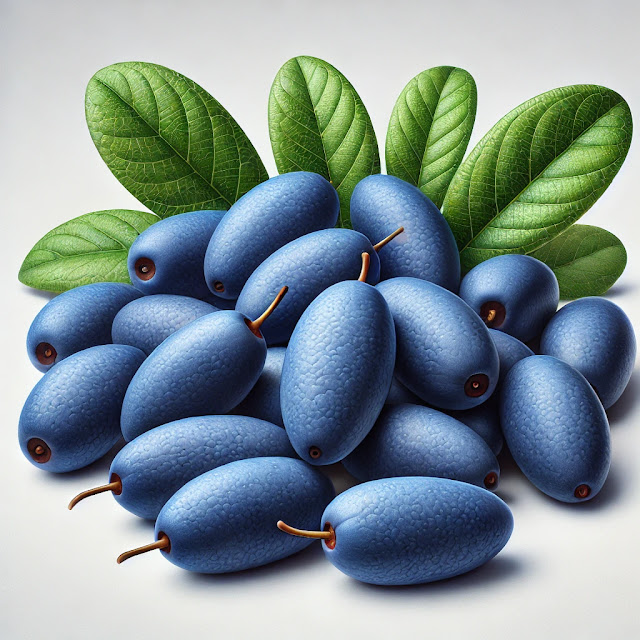Discover the Unique Flavor and Health Benefits of Quince
Overview:
Quince is a unique fruit known for its aromatic scent and distinctively firm, astringent flesh. Often compared to a cross between an apple and a pear, quince has a hard texture that softens beautifully when cooked, releasing its natural sweetness. With origins tracing back to ancient times, quince has been valued for both its culinary uses and its health benefits.
Calories and Key Nutrients (per 100g):
A 100g serving of quince contains approximately 57 calories, making it a low-calorie fruit. Quince is rich in vitamin C, fiber, copper, and antioxidants. These nutrients support immune health, digestive health, and help reduce inflammation. Compared to apples and pears, quince has a similar fiber content but offers a higher concentration of vitamin C, which supports overall immunity.
Health Benefits:
Quince is packed with beneficial compounds that promote health in several ways. The vitamin C content supports immune function and skin health, while the high fiber aids in digestion and helps manage blood sugar levels. Quince is also rich in tannins and phenolic compounds, which act as antioxidants, protecting cells from damage and reducing inflammation. Some studies suggest quince may also alleviate nausea and help with gastrointestinal discomfort.
Proper Consumption Methods:
Quince is not typically eaten raw due to its firm and astringent texture. Instead, it is often cooked to bring out its natural sweetness and soft texture. You can poach quince slices in sugar syrup, bake them with cinnamon, or make quince preserves. In Korea, quince is often sliced and steeped in honey to make a soothing tea.
Tasty Ways to Eat Quince (Recipes):
One popular way to enjoy quince is by making quince jelly or jam. Simmering quince in sugar and lemon juice creates a delicious spread that pairs well with bread or cheese. Another favorite is baked quince, where the fruit is sliced, sprinkled with cinnamon, and baked until tender. For a more traditional dessert, try a spiced quince compote, which makes a wonderful topping for yogurt or ice cream.
Cautions When Eating Quince:
While quince is generally safe to eat, consuming too much raw quince can lead to digestive discomfort due to its high fiber and tannin content. Cooked quince is gentler on the stomach, and it's recommended to start with small amounts if you're sensitive to high-fiber foods. Additionally, quince seeds contain trace amounts of cyanide compounds, so it’s best to remove them before cooking or consuming.
Comparing Quince to Other Fruits:
Quince shares some characteristics with apples and pears but has a firmer texture and is not as sweet. Compared to pears, quince has more vitamin C, making it an excellent option for those looking to boost immunity. Both apples and quince contain fiber, but quince has a slightly higher antioxidant content, supporting cellular health and reducing inflammation.
Who Should Eat Quince and Who Should Avoid It:
Quince is great for those looking to boost their fiber and antioxidant intake. It’s beneficial for people with digestive health goals or those seeking immune support. However, people with gastrointestinal sensitivities should consume it cooked rather than raw, and those with kidney issues should moderate their intake due to the fruit’s potassium content.
Interesting Stories or Facts:
Quince is an ancient fruit believed to be a symbol of love and fertility. In Greek mythology, it was dedicated to the goddess Aphrodite. Quince was also a favorite among Roman aristocrats and was often used in elaborate dishes to showcase wealth and culinary skills.
Quince Culture Around the World:
In the Middle East, quince is commonly used in savory dishes, often stewed with lamb and spices. In Europe, quince is used to make a popular jelly known as "membrillo," which is traditionally served with cheese. In Korea, quince tea, made by preserving quince slices in honey, is enjoyed for its soothing effects, especially in winter.
Scientific Research on Quince:
Studies have shown that quince’s antioxidants can help reduce oxidative stress and may have anti-inflammatory effects. Research suggests that quince’s phenolic compounds may support digestive health and help reduce nausea. Additionally, its high vitamin C and fiber content are linked to improved immune and heart health.
Conclusion:
Quince is a nutritious, flavorful fruit with a wide array of health benefits, from supporting immunity to promoting digestive health. Enjoyed worldwide in both savory and sweet dishes, quince is a versatile fruit that deserves a place in your diet. However, individuals with sensitive stomachs should consume it cooked and remove the seeds before consumption.
This information may not be entirely accurate, so if you have any medical conditions, please consult a doctor before consuming quince.











Comments
Post a Comment